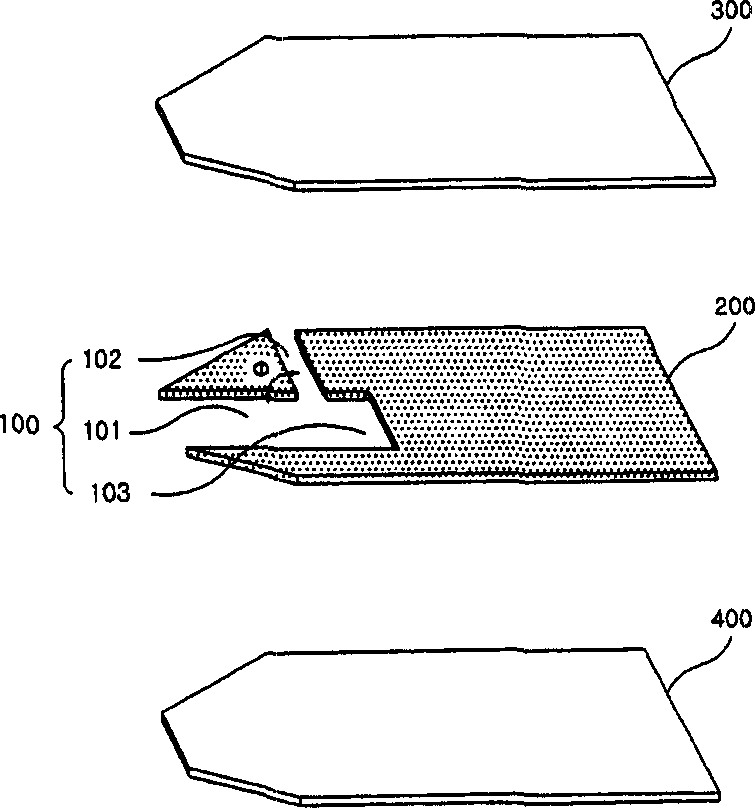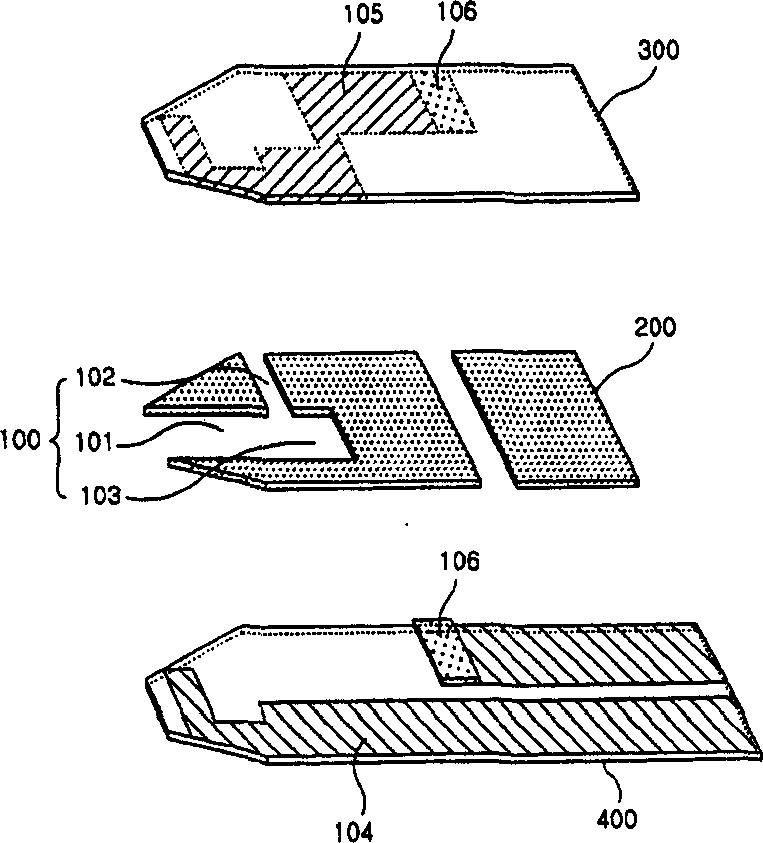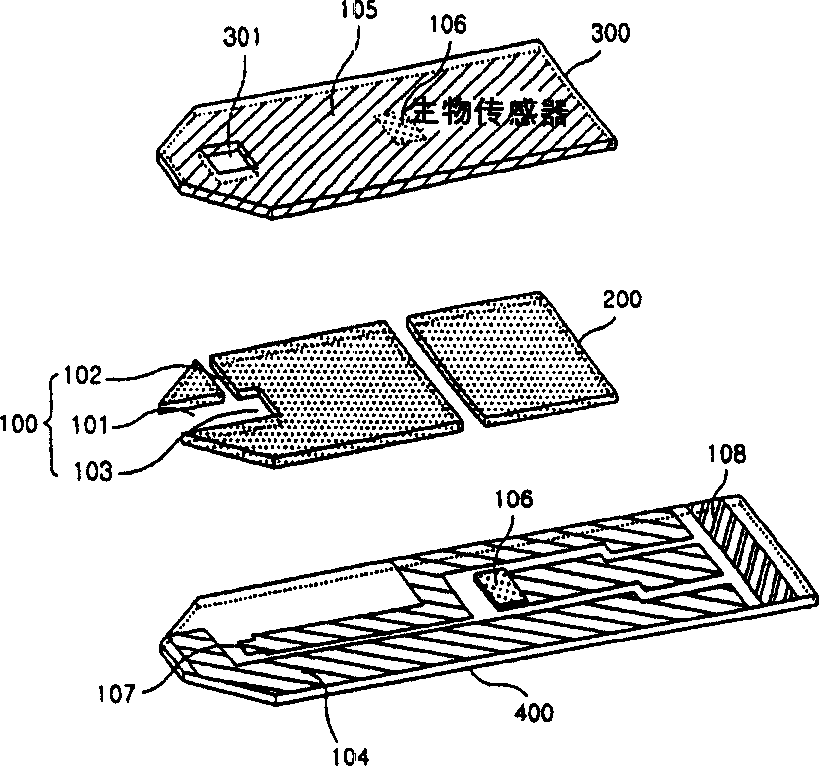Electrochemical biosensor
A biosensor, electrochemical technology, applied in the direction of scientific instruments, biological testing, biochemical equipment and methods, etc.
- Summary
- Abstract
- Description
- Claims
- Application Information
AI Technical Summary
Problems solved by technology
Method used
Image
Examples
Embodiment 1
[0118] Example 1: Preparation of a fatty acid-free reagent layer composition solution
[0119] Will contain 30mg hexaamine ruthenium (III) chloride (41.6% by weight), 1mg carboxymethyl cellulose (1.4% by weight), 1mg Triton X-100 (14% by weight) and 40mg glucose oxidase (55.6% by weight) The mixture was dissolved in 1 ml PBS buffer (pH 6.4), and then undissolved particles were filtered out. Place the reagent solution thus obtained in the syringe of a pneumatic dispenser (EFD XL100).
Embodiment 2
[0120] Example 2: Preparation of a reagent layer composition solution containing fatty acids
[0121] Will contain 30mg hexaamine ruthenium (III) chloride (41.6% by weight), 1mg carboxymethyl cellulose (1.4% by weight), 5mg polyvinylpyrrolidone (4% by weight), 1mg Triton X-100 (1.4% by weight), A mixture of 20 mg lauric acid (15.7 wt%), 30 mg myristyl trimethylammonium bromide (23.6 wt%) and 40 mg glucose oxidase (55.6 wt%) was dissolved in 1 ml PBS buffer (pH 6.4), and then filtered Remove undissolved particles. The reagent solution thus obtained was placed in the syringe of a pneumatic dispenser (EFDXL100).
Embodiment 3
[0123] In this embodiment, a method of measuring blood glucose level is described. use figure 2 with 3b The illustrated auxiliary electrode 105 serves as a reference electrode in a thin-layer electrochemical cell type biosensor. The following method is used to manufacture a thin-layer electrochemical cell for measuring blood glucose level.
[0124] Such as figure 2 , 3a As shown in and 3b, the working electrode 104 and the electrode connector 106, which are thick enough to be three-dimensionally connected to the auxiliary electrode, are screen-printed with conductive carbon paste, and then cured at 140°C for 5 minutes. Next, silver paste for circuit connectors is screen printed on one end of the electrode connector 106 to the thickness of the middle substrate 200. Likewise, the reference (auxiliary) electrode 105 is screen-printed on the upper substrate 300 with carbon paste and cured under the same conditions as the electrode of the lower substrate 400. Finally, silver paste is...
PUM
 Login to View More
Login to View More Abstract
Description
Claims
Application Information
 Login to View More
Login to View More - R&D
- Intellectual Property
- Life Sciences
- Materials
- Tech Scout
- Unparalleled Data Quality
- Higher Quality Content
- 60% Fewer Hallucinations
Browse by: Latest US Patents, China's latest patents, Technical Efficacy Thesaurus, Application Domain, Technology Topic, Popular Technical Reports.
© 2025 PatSnap. All rights reserved.Legal|Privacy policy|Modern Slavery Act Transparency Statement|Sitemap|About US| Contact US: help@patsnap.com



